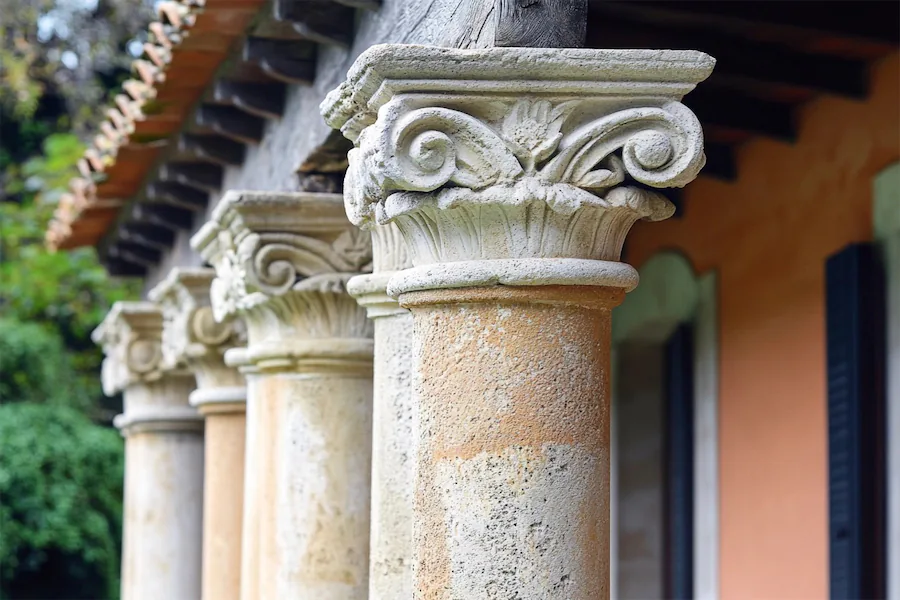Mediterranean architecture, with its roots in the countries bordering the Mediterranean Sea, is celebrated for its harmonious blend of form and function. A defining feature of this style is the use of arches and columns, which not only provide structural support but also contribute to the aesthetic appeal of the buildings.
History and Origins of Mediterranean Columns
The incorporation of columns in Mediterranean architecture dates back to ancient civilizations, notably the Greeks and Romans. The Greeks developed three distinct orders of columns—Doric, Ionic, and Corinthian—each with unique proportions and decorative elements. The Romans adopted and adapted these styles, integrating them into their architectural endeavors. These classical elements were later revived during the Renaissance and have since been integral to Mediterranean architectural design.
Key Features of Mediterranean Columns
Mediterranean columns are characterized by several distinctive features:
- Classical Orders: The use of Doric, Ionic, and Corinthian orders is prevalent, each bringing its own set of proportions and decorative motifs. Doric columns are sturdy and plain, Ionic columns feature scroll-like volutes, and Corinthian columns are adorned with acanthus leaves.
- Materials: Traditional materials include stone and stucco, chosen for their durability and ability to withstand the Mediterranean climate. In modern applications, materials like reinforced concrete and fiberglass are also used for their resilience and ease of maintenance.
- Decorative Elements: Columns often feature intricate carvings and moldings, such as egg-and-dart motifs, fluting along the shafts, and ornate capitals, adding to the visual richness of the structures.
Applications of Columns in Mediterranean Architecture
Columns serve both structural and decorative purposes in Mediterranean architecture:
- Structural Support: They support arches, porticos, and balconies, contributing to the open and airy feel of Mediterranean homes. The use of columns allows for expansive openings and shaded outdoor spaces, essential for comfort in warm climates.
- Aesthetic Appeal: Beyond their structural role, columns enhance the elegance and grandeur of buildings. They frame entrances, line courtyards, and define perimeters of patios, creating harmonious proportions and rhythmic patterns that are pleasing to the eye.
Considerations When Incorporating Columns
When integrating columns into Mediterranean-style architecture, consider the following:
- Proportionality: Ensure that the size and style of the columns are proportionate to the building’s overall dimensions and architectural elements. Oversized or undersized columns can disrupt the visual harmony.
- Material Selection: Choose materials that not only align with the aesthetic but also offer durability and low maintenance, especially in regions with similar climates to the Mediterranean.
- Historical Accuracy: For authentic designs, adhere to the classical orders and traditional decorative motifs. However, contemporary interpretations can blend modern materials and simplified forms while maintaining the essence of Mediterranean style.
Conclusion
Columns are a quintessential element of Mediterranean architecture, embodying a rich historical legacy and contributing to the style’s timeless elegance. Their thoughtful incorporation enhances both the structural integrity and aesthetic appeal of Mediterranean-inspired homes, making them enduring symbols of this architectural tradition.
